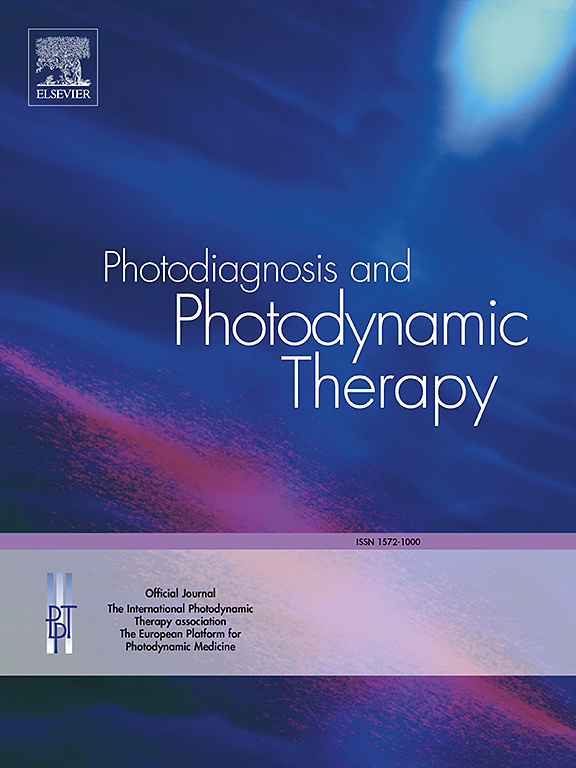深度学习的光诊断:一种基于gan和自编码器的糖尿病视网膜病变检测方法。
IF 3.1
3区 医学
Q2 ONCOLOGY
引用次数: 0
摘要
背景:糖尿病视网膜病变(DR)是世界范围内视力损害和失明的主要原因,需要早期发现和准确诊断。本研究提出了一个新的框架,集成了生成对抗网络(GANs)用于数据增强,去噪自动编码器用于降噪,以及使用effentnetb0进行迁移学习以提高DR分类模型的性能。方法:利用gan生成高质量的合成视网膜图像,有效解决类不平衡问题,丰富训练数据集。去噪自动编码器通过降低噪声和消除常见的伪影(如斑点噪声、运动模糊和光照不一致)进一步提高了图像质量,为分类模型提供了干净一致的输入。在增强和去噪数据集上对EfficientNetB0进行了微调。结果:该框架实现了卓越的分类指标,包括99.00%的准确率、召回率和特异性,超过了最先进的方法。该研究采用了一个定制的OCT数据集,该数据集具有高分辨率和临床相关的图像,解决了诸如有限的注释数据和噪声输入等挑战。结论:与现有研究不同,我们的工作独特地集成了gan、自动编码器和EfficientNetB0,展示了所提出框架的稳健性、可扩展性和临床潜力。未来的方向包括整合可解释性工具以提高临床应用,并探索其他成像方式以进一步提高普遍性。这项研究强调了深度学习在解决糖尿病视网膜病变诊断中的关键挑战方面的变革潜力。本文章由计算机程序翻译,如有差异,请以英文原文为准。
Photodiagnosis with deep learning: A GAN and autoencoder-based approach for diabetic retinopathy detection
Background
Diabetic retinopathy (DR) is a leading cause of visual impairment and blindness worldwide, necessitating early detection and accurate diagnosis. This study proposes a novel framework integrating Generative Adversarial Networks (GANs) for data augmentation, denoising autoencoders for noise reduction, and transfer learning with EfficientNetB0 to enhance the performance of DR classification models.
Methods
GANs were employed to generate high-quality synthetic retinal images, effectively addressing class imbalance and enriching the training dataset. Denoising autoencoders further improved image quality by reducing noise and eliminating common artifacts such as speckle noise, motion blur, and illumination inconsistencies, providing clean and consistent inputs for the classification model. EfficientNetB0 was fine-tuned on the augmented and denoised dataset.
Results
The framework achieved exceptional classification metrics, including 99.00 % accuracy, recall, and specificity, surpassing state-of-the-art methods. The study employed a custom-curated OCT dataset featuring high-resolution and clinically relevant images, addressing challenges such as limited annotated data and noisy inputs.
Conclusions
Unlike existing studies, our work uniquely integrates GANs, autoencoders, and EfficientNetB0, demonstrating the robustness, scalability, and clinical potential of the proposed framework. Future directions include integrating interpretability tools to enhance clinical adoption and exploring additional imaging modalities to further improve generalizability. This study highlights the transformative potential of deep learning in addressing critical challenges in diabetic retinopathy diagnosis.
求助全文
通过发布文献求助,成功后即可免费获取论文全文。
去求助
来源期刊

Photodiagnosis and Photodynamic Therapy
ONCOLOGY-
CiteScore
5.80
自引率
24.20%
发文量
509
审稿时长
50 days
期刊介绍:
Photodiagnosis and Photodynamic Therapy is an international journal for the dissemination of scientific knowledge and clinical developments of Photodiagnosis and Photodynamic Therapy in all medical specialties. The journal publishes original articles, review articles, case presentations, "how-to-do-it" articles, Letters to the Editor, short communications and relevant images with short descriptions. All submitted material is subject to a strict peer-review process.
 求助内容:
求助内容: 应助结果提醒方式:
应助结果提醒方式:


